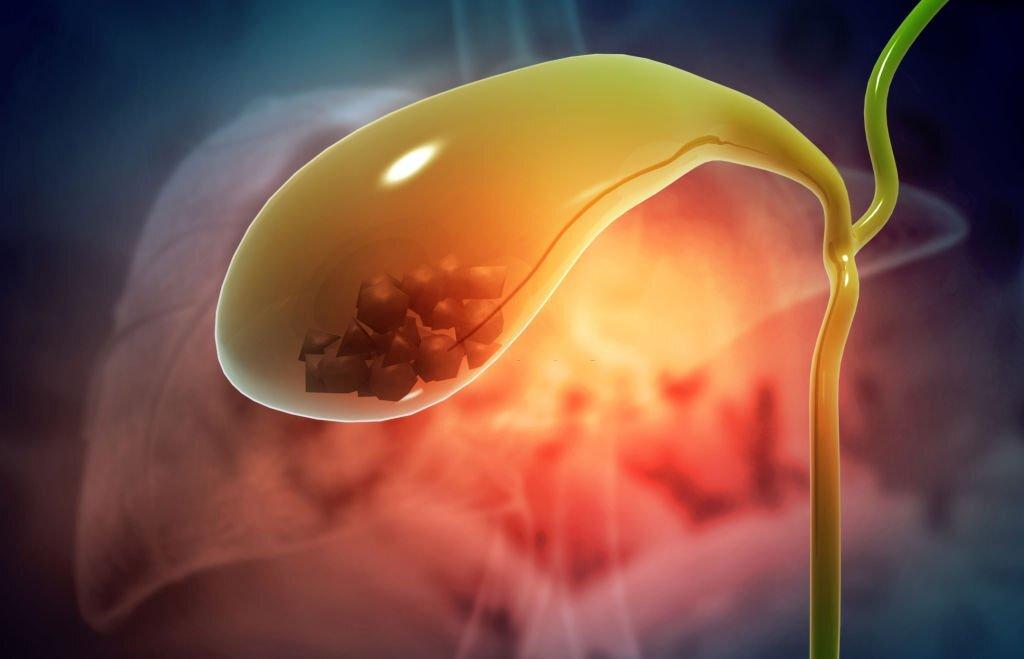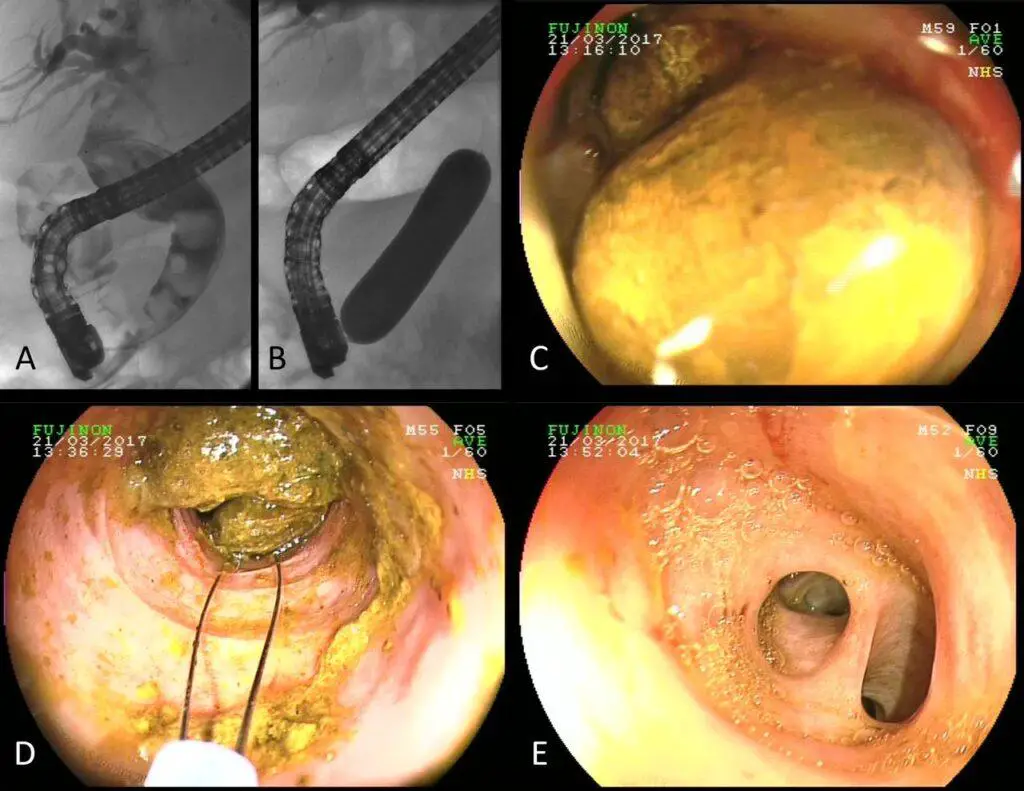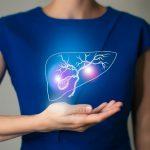Crest 3D Whitestrips, Professional Effects Plus, Teeth Whitening Strip Kit, 48 Strips (24 Count Pack)
26% OffAre you experiencing abdominal pain, discomfort, or digestive issues? You might be dealing with bile duct stones or gallstones. These conditions can cause significant discomfort and require proper understanding to ensure effective treatment. In this article, we will delve into the differences between bile duct stones and gallstones, explore their causes and symptoms, and discuss the available treatment options. So, let’s dive right in!
Introduction: The Importance of Bile Duct and Gallbladder Health
Before we dive into the specifics, let’s take a moment to understand the significance of bile ducts and the gallbladder in our digestive system. The bile ducts play a crucial role in transporting bile, a fluid produced by the liver that aids in the digestion and absorption of fats. The gallbladder, on the other hand, stores and concentrates bile, releasing it into the small intestine when needed. These organs are vital for proper digestion and overall well-being.
Understanding Bile Duct Stones
Definition and Formation
Bile duct stones, also known as choledocholithiasis, are hardened deposits that form in the bile ducts. These stones can vary in size, ranging from small sand-like particles to larger, more solid formations. They develop when the bile contains excessive amounts of cholesterol, bilirubin, or calcium, which crystallize and form stones.
What are gallstones?
Gallstones, which are created in the gallbladder, form when substances in the bile create hard, crystal-like particles. Cholesterol stones, as the name implies, are made of cholesterol and appear light in color. Eighty percent of gallstones are formed this way.
Pigment calculi are minute, obscure stones comprised of bilirubin and calcium salts that are present in bile. Roughly twenty percent of gallstones consist of pigment stones. Factors that increase the risk of pigment stone formation include:
- Cirrhosis of the liver
- Infections in the biliary tract
- Hereditary blood cell disorders (such as sickle cell anemia)
Gallstones can vary in size, ranging from as small as a grain of salt to as large as a golf ball. The gallbladder can develop numerous smaller stones or a single, often substantial, stone. In some cases, the gallbladder can even contain several thousand stones.
What are stones in the bile duct?
Gallstones that travel out of the gallbladder can enter the stomach. However, due to the size or structure of the biliary tree, a stone may become lodged in the bile duct. Bile duct stones are gallstones that have become stuck in the bile duct. When these stones block the ducts leading to the duodenum, they can cause excruciating pain and pose a significant risk.

What causes gallstone formation?
Advancements have been made in understanding the process of gallstone formation. Gallstones may be caused by:
- Inherited body chemistry
- Body weight
- Motility of the gallbladder (the gallbladder is a contractile muscular sac)
- Diet and lifestyle
Cholesterol gallstones
When the bile contains excessive cholesterol and insufficient bile salts, cholesterol gallstones can develop. Apart from high cholesterol levels, two other factors appear to be influential in gallstone formation. The motility of the gallbladder refers to its ability to contract and push bile into the bile duct. If the gallbladder fails to function properly, bile may not flow into the bile duct as it should, leading to the concentration of bile and the formation of small crystals.
Proteins present in the liver and bile can also contribute to gallstone formation by promoting the crystallization of cholesterol.
Other factors may also contribute to gallstone formation, although the exact mechanisms are not yet clear. These factors include:
- Obesity
- Low-calorie and rapid weight-loss diets
- Prolonged fasting
- Increased estrogen levels due to pregnancy
- Hormone therapy
- Use of birth control pills
Who is at risk for gallstones?
- Approximately one million people are affected by gallstones each year, with women being twice as likely to develop them as men. They join the estimated 20 million Americans, roughly 10 percent of the population, who already have gallstones. The following groups are more likely to develop gallstones:
- Women aged 20 to 60
- Men and women aged 60 and above
- Overweight men and women
- Individuals who engage in “crash” diets or experience rapid weight loss
- Pregnant women or those who have used birth control pills or undergone estrogen replacement therapy
- Native Americans
- Mexican-Americans
What are the symptoms of gallstones?
Some individuals with gallstones may have what are known as “silent stones.” Studies indicate that most people with silent stones may not experience any symptoms for a significant period and may remain symptom-free for years without requiring treatment. These stones often go undiagnosed until they start causing discomfort.
For those who are not as fortunate, symptoms of gallstones may include:
- Acute pain can be extremely severe and sudden, lasting from a few minutes to several hours
- Pain is typically located behind the breastbone or in the upper right abdominal area
- Pain between the shoulder blades
- Chills and fever
- Jaundice (yellowing of the skin and eyes)
- Nausea and vomiting
- Attacks can occur sporadically, with weeks, months, or even years between episodes.
It is not uncommon for attacks to be separated by weeks, months, or even years.
What complications can arise?
One common complication caused by gallstones is the blockage of the cystic duct. Gallstones may exit the gallbladder and enter the cystic duct, the channel through which bile flows from the gallbladder to the small intestine. If gallstones severely obstruct or block the flow of bile in the cystic duct, it can lead to inflammation of the gallbladder known as cholecystitis.
A less common but more serious problem occurs when gallstones become trapped in the bile ducts between the liver and the intestine. This condition, called cholangitis, can obstruct the flow of bile from the gallbladder and liver, resulting in pain, jaundice, and fever.
Gallstones can also interfere with the flow of digestive fluids into the small intestine, causing inflammation of the pancreas, known as pancreatitis. Prolonged blockage of any of these ducts can cause severe damage to the gallbladder, liver, or pancreas, which can be fatal.
How are gallstones diagnosed?
Various diagnostic methods can be employed to detect gallstones, including:
- Abdominal X-ray
- Computerized axial tomography (CT) scan
- Abdominal ultrasound is usually performed for an unrelated issue or complaint.
Ultrasound is the most commonly used diagnostic tool for detecting gallstones. Ultrasound examinations, also known as ultrasonography, utilize sound waves to create images of the abdominal organs, including the gallbladder. If stones are present, the sound waves will bounce off them, revealing their location.
Ultrasound has several advantages.
- It is a non-invasive technique that does not require injection or penetration of the body.
- It is a painless procedure with no known side effects.
- It does not involve the use of radiation.
Occasionally, additional tests may be necessary to detect small stones or confirm their absence. These may include:
- MRCP (magnetic resonance cholangiopancreatography), which uses magnetic imaging
- Endoscopic ultrasound, a minimally invasive procedure that visualizes tissue near the esophagus and stomach
- ERCP (endoscopic retrograde cholangiopancreatography), is particularly relevant for diagnosing and managing bile duct stones
Other gallbladder conditions
Pain and inflammation of the gallbladder can occur even in the absence of gallstones.
Calculus cholecystitis
Calculus cholecystitis, or inflammation of the gallbladder without stones, may occur alongside other severe illnesses. This condition arises when the stagnant gallbladder fluids become infected during an extended illness.
Biliary dyskinesia
Biliary dyskinesia refers to the disordered functioning of the gallbladder, where it fails to empty properly due to inflammation or spasm of its drainage system (the cystic duct). When a meal is consumed, the gallbladder contracts, forcing bile into the duodenum. However, if the gallbladder cannot contract, the resulting pressure causes pain.
The diagnosis of both these conditions often involves a HIDA scan, a scanning technique that utilizes radioactive isotopes. This scan helps determine whether the gallbladder is blocked or unable to drain completely.
Treatments
Cholecystectomy
More than 500,000 Americans undergo gallbladder surgery annually. Known as cholecystectomy, this procedure remains the most common treatment for gallstones, despite the development of alternative nonsurgical techniques. There are two types of cholecystectomy: the standard “open” cholecystectomy and a less invasive procedure called laparoscopic cholecystectomy.
Open Cholecystectomy
The standard cholecystectomy is a major abdominal surgery where the surgeon removes the gallbladder through a 5-to-8-inch incision. Patients typically spend about a week in the hospital and require several weeks of home recovery.
Laparoscopic Cholecystectomy
Laparoscopic cholecystectomy is a minimally invasive method for gallbladder removal, accounting for approximately 95% of all cholecystectomies performed. This technique involves making several small incisions in the abdomen to insert surgical instruments and a small video camera. The surgeon obtains a close-up view of the internal organs through the camera, displayed on a video monitor. Manipulating the instruments while watching the monitor, the surgeon performs the procedure.
Laparoscopic cholecystectomy offers advantages such as reduced pain, faster healing, improved cosmetic results, and fewer complications like infection. Patients usually spend only one night in the hospital and require a few days of recuperation at home.
Non-surgical Approaches
Various non-surgical methods are available but are typically employed in specific circumstances. For patients with acute inflammation of the gallbladder or calculus cholecystitis, “percutaneous drainage” may be the initial treatment step. This involves inserting a tube and needle (catheter) directly into the gallbladder to drain the harmful fluids. Cholecystectomy is performed after the acute condition has subsided.
Special medications can dissolve gallstones composed of cholesterol. However, this approach is effective only when there is no blockage and is usually more practical for smaller stones. Treatment duration is often lengthy, spanning months or years, and there is a risk of stone recurrence when the treatment is discontinued. Thus, it is rarely used and reserved for certain individuals who are unable to undergo surgery.
Extracorporeal Shockwave Lithotripsy (ESWL) is an effective method for treating kidney stones but is rarely used for gallstones. ESWL requires multiple treatments and has drawbacks, including the potential for stone recurrence. In the case of gallstones, ESWL can be employed to break them into fragments that can then pass into the small bowel.
Treatment of bile duct stones
Various options exist for treating bile duct stones that do not cause severe symptoms. Gallstones can be removed during open cholecystectomy. Although some experts can remove bile duct stones during laparoscopic cholecystectomy, the technique of laparoscopic common bile duct exploration is available only at a few specialized centers. Laparoscopic cholecystectomy for gallbladder stones and ERCP for bile duct stones can be a successful combined approach. ERCP is usually performed before laparoscopic cholecystectomy when the presence of a bile duct stone is evident based on clinical presentation and tests. However, ERCP can also be performed after laparoscopic cholecystectomy if a bile duct stone is discovered during the operation using an “operative cholangiogram” X-ray.
Prevention Tips for Bile Duct Stones and Gallstones
While not all cases of bile duct stones and gallstones can be prevented, certain lifestyle modifications can reduce the risk. Consider the following preventive measures:
Lifestyle Modifications
- Maintain a healthy weight: Aim for a healthy body weight and avoid rapid weight loss or weight gain.
- Stay physically active: Engage in regular exercise to promote optimal digestive function.
- Avoid crash diets: Gradual and sustainable weight loss is preferable to extreme diets.
- Limit alcohol consumption: Excessive alcohol intake can increase the risk of gallstone formation.
Dietary Recommendations
- Eat a balanced diet: Include a variety of fruits, vegetables, whole grains, and lean proteins in your diet.
- Limit fatty and fried foods: Reduce the consumption of high-fat and fried foods, as they can contribute to gallstone formation.
- Increase fiber intake: Adequate fiber intake can promote healthy digestion and prevent constipation.
Conclusion
Bile duct stones and gallstones are common conditions that can cause discomfort and digestive issues. It’s crucial to understand the differences between these two conditions and seek appropriate treatment when necessary. By recognizing the symptoms and risk factors associated with bile duct stones and gallstones, you can take steps to prevent their formation or address them promptly. Remember to consult with a healthcare professional for an accurate diagnosis and personalized treatment plan.
Frequently Asked Questions (FAQs)
Can I prevent the formation of bile duct stones and gallstones?
While not all cases can be prevented, adopting a healthy lifestyle, maintaining a balanced diet, and avoiding rapid weight fluctuations can help reduce the risk of developing bile duct stones and gallstones.
Are there any natural remedies to dissolve bile duct stones and gallstones?
Certain natural remedies, such as apple cider vinegar, lemon juice, and dandelion root, are often suggested to help dissolve gallstones. However, it’s essential to consult with a healthcare professional before trying any alternative therapies.
Dr. Ahmed Raza, a renowned gastroenterologist with over 20 years of experience, is the dedicated founder of LifeWithNoGallbladder. With a passion for improving gallbladder health, Dr. Raza shares extensive insights, records, and guidance through his blog, providing individuals with the necessary information to make informed decisions.















